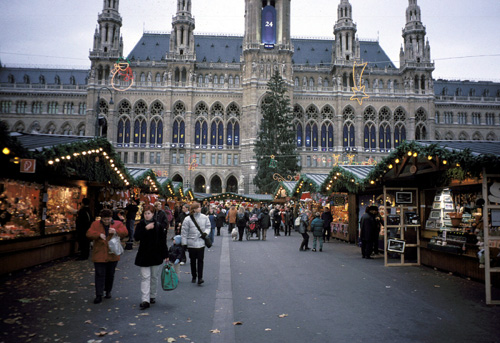A biweekly newsletter with public space news, resources, and opportunities.
A curated dispatch on all things public markets plus the latest announcements from the Market Cities Program.

Civic buildings, particularly museums and libraries, are already using world renowned architects who are designing iconic architecture to make a statement about the importance of their facilities. However, very few have tried to use the architecture to create a place. Mimi Gates, the director of the Seattle Art Museum envisions the ground floor of her museum as the “town square” where ideas can be discussed and where the community can gather for a multitude of reasons. The norm, however, is designing buildings with blank walls around their perimeters with few ground floor uses, such as cafes, book and gift shops, resource centers, etc. that would attract passersby, serve the community and support the context and street life in the areas proximate to it. Moving towards and architecture of place can transform civic buildings into key anchors of their communities.
Placemaking around community anchors is an important way to reinvigorate city centers and downtowns. Civic institutions and public spaces can once again become vibrant destinations as well as catalysts for revitalizing the neighborhoods around them. Until the recent economic downturn, many cities had come to rely almost exclusively on private development for their growth and economic vitality. As this source capital funding diminishes, the need for finding other partners becomes paramount to a city’s survival. At the same time, developers need to be attracted back to city centers where they may find new and innovative opportunities for investment in places that already have many assets upon which to build and where there are ready partners who are in agreement on a way forward.
However, from our years of Placemaking work, it is clear that civic institutions cannot ”turn a place around” on their own. Alone, they lack the necessary resources and their own core mission and the needs of their core constituency demand most of their energy (as well as human and financial resources). However, partnering with the non-profit and private sectors, as well as other community anchors, can help these institutions better achieve their own goals while also applying Placemaking on a district-wide scale.
PPS will work with multiple partners to strengthen the role of civic institutions as important destinations in cities and encourage them to reassert themselves as cornerstones of communities, and as the creators and animators of vital public spaces. Through programming and partnerships PPS will strive to fully maximize and leverage existing facilities to serve as public spaces, and to be active engaged partners with the private sector and other public sector interests. The Architecture of Place Initiative will touch upon several cross-cutting issues, including public markets, multiculturalism, management, sustainability and the architecture of place.
The rich text element allows you to create and format headings, paragraphs, blockquotes, images, and video all in one place instead of having to add and format them individually. Just double-click and easily create content.
The rich text element allows you to create and format headings, paragraphs, blockquotes, images, and video all in one place instead of having to add and format them individually. Just double-click and easily create content.
Body Text Body Link
The rich text element allows you to create and format headings, paragraphs, blockquotes, images, and video all in one place instead of having to add and format them individually. Just double-click and easily create content.
Here is some highlighted text from the article.




Headings, paragraphs, blockquotes, figures, images, and figure captions can all be styled after a class is added to the rich text element using the "When inside of" nested selector system.
Headings, paragraphs, blockquotes, figures, images, and figure captions can all be styled after a class is added to the rich text element using the "When inside of" nested selector system.
Headings, paragraphs, blockquotes, figures, images, and figure captions can all be styled after a class is added to the rich text element using the "When inside of" nested selector system.

We are committed to access to quality content that advances the placemaking cause—and your support makes that possible. If this article informed, inspired, or helped you, please consider making a quick donation. Every contribution helps!
Project for Public Spaces is a 501(c)(3) tax-exempt organization and your donation is tax-deductible within the guidelines of U.S. law.